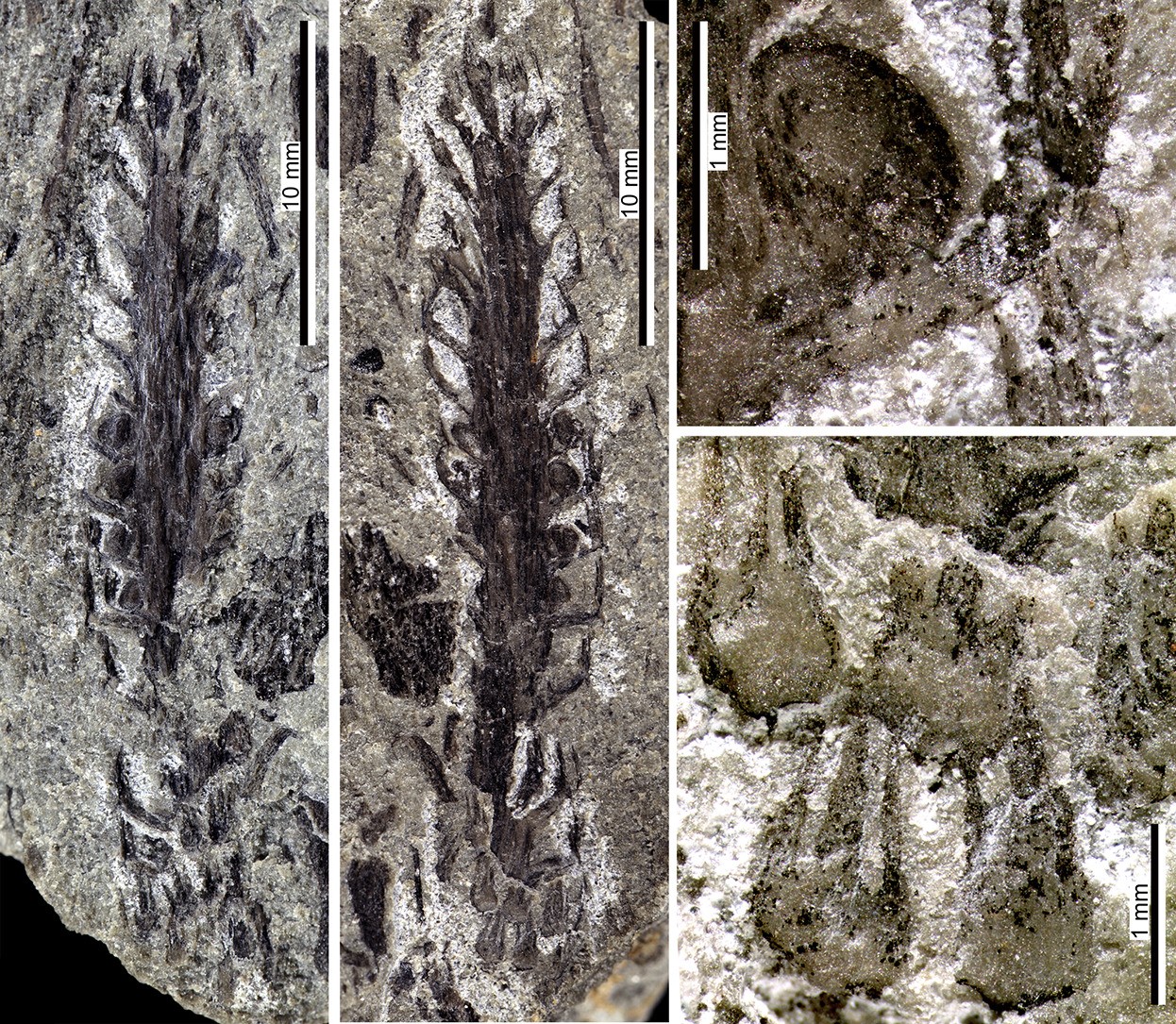
Tiaomaphyton fui gen. et sp. nov. Xu, Fu et Wang from the Middle Devonian Tiaomachian Formation, Hunan, South China
The Middle Devonian flora of South China constitutes a key component of Palaeozoic floras and is characterised as being dominant of endemic plants. However, the study of the Middle Devonian flora was mainly based on materials from the upper Yangtze region, such as the Xichong Flora from Yunnan Province, southwestern China (Yangtze Block). Central Hunan, especially the palaeogeographic Cathaysia Block, though develops non-marine Middle Devonian deposits, well-described plant fossils that can be compared with those from other coeval floras were rare. It is significant for understanding plants evolution, comparing floras and palaeogeography to study Middle Devonian flora from Hunan Province.
Recently, a new protolepidodendrid lycopsid is described from the Middle Devonian Tiaomachian Formation of Changsha, Hunan, by the workgroup of prof. XU Honghe, Associate Prof. FU Qiang and graduate student WANG Yao from Nanjing Institute of Geology and Palaeontology, Chinese Academy of Sciences.
The plant has slender stem and oval leaf base. Its leaf trifurcates into a lamina with three segments in one plane curving adaxially and a heel of small tip downwardly. The central segment is the longest, whilst all three segments are close and paralleling arranged. The sporangium attached adaxially to the sporophyll by a pad is ellipsoidal and oval in shape and with longitudinal dehiscence. The plant Tiaomaphyton fui was named after its locality Tiaomajian Town.
The present plant Tiaomaphyton fui from the Middle Devonian of central Hunan, which palaeogeographically belongs to the Cathaysia Block, one of the two sub-regions of the whole South China Plate.
The study gives a better understanding of the Middle Devonian flora of the Cathaysia Block and has palaeogeographic implications to the South China Plate. A floristic distinction between the Cathaysia and Yangtze blocks is suggested and it is probably caused by the special palaeogeographic pattern of the South China Plate.
This paper will be published recently in the Journal “Review of Palaeobotany and Palynology”.
Paper information: Xu H-H, Fu Q, Wang Y. 2018. A new protolepidodendrid lycopsid from the Middle Devonian of Hunan, South China and its palaeogeographic implications. Review of Palaeobotany and Palynology. 256, 63-69.
https://doi.org/10.1016/j.revpalbo.2018.06.003
